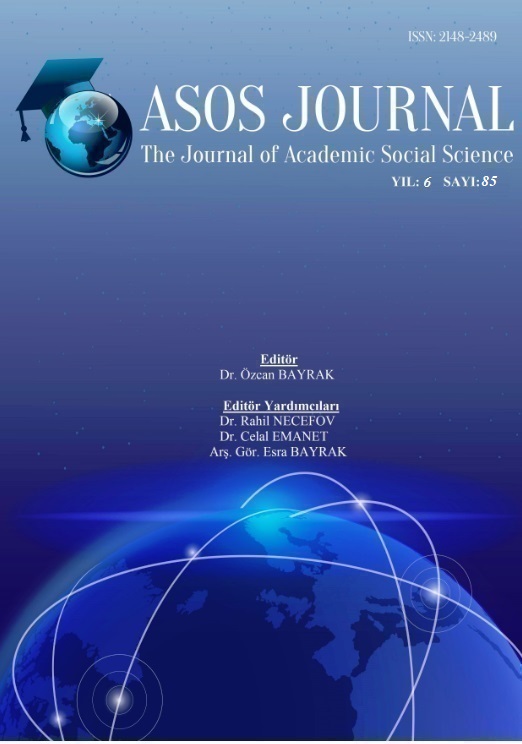Author :
Abstract
Edebî sanatların örneklerle açıklandığı belâgat kitapları belli bir silsile hâlinde kaleme alınmış, tarif ve tasnifler birbirine çok yakın olmuş; ancak, bazı kitaplarda farklı tarif ve tasnif görülebilmiştir. Osmanlı sahasında Tanzimata dek klasik medrese usulüyle okutulan belâgat konuları Tanzimattan sonra mekteplerde Batılı usule göre de verilmiş, bazı ders notları da kitaba dönüşmüştür. Bu kitaplar medreselerde okutulan klasik Arapça belagat kitaplarını esas almakla beraber şekil ve muhtevaca farklı olmuş, konular daha kısa ve sade anlatılmıştır. Kaynak olarak genellikle Sekkâkî’nin Miftâhu’l-Ulûm’u ile onun özet veya şerhlerini esas alan bu kitaplarda sanatlar farklı bölümlerde açıklanabilmiştir. Belâgat kitaplarında açıklanan mana sanatlarından birisi de iltifât olup Miftâhu’l-Ulûm ile onun özet ve şerhlerinde meânî bölümünde açıklanmışken Osmanlı belâgat kitaplarının çoğunda bedî’ bölümünde ele alınmıştır. İltifât, konuşmada bir kipten diğer bir kipe geçmek demek olup, üç kısma ayrılmaktadır. Öte yandan belâgat kitaplarında iltifât ve tecrîd sanatlarının, birbirine yakınlıkları sebebiyle aradaki farkları göstermek amacıyla mukayese edildikleri de görülmektedir.
Keywords
Abstract
The literary arts books, which are explained with examples, were written in a certain chain and the descriptions and classifications were found close to each other. however, in some books different definitions and recipes could be seen. The subjects of the rhetoric which were taught in the classical Ottoman period until Tanzimata were given in Western schools after Tanzimat and some of the lecture notes became a book. Although these books were based on classical Arabic eloquence books in madrasahs, they were different in form and content and the subjects were shorter and simpler. In these books which are generally attached to Miftah al-Ulum and its abstracts or commentaries, arts can be explained in different sections. One of the arts described in the rhetoric books is the compliment and it is explained in the maani section of Miftâh al-Ulum and in his commentaries and annotations; In most of the Ottoman literary books, it is explained in the section of bedi. Compliment means to move from one mode to another in conversation; divided into three parts. On the other hand, it is also seen that in rhetoric books, the arts of compliment and the tecrid are compared with each other in order to show the differences.





